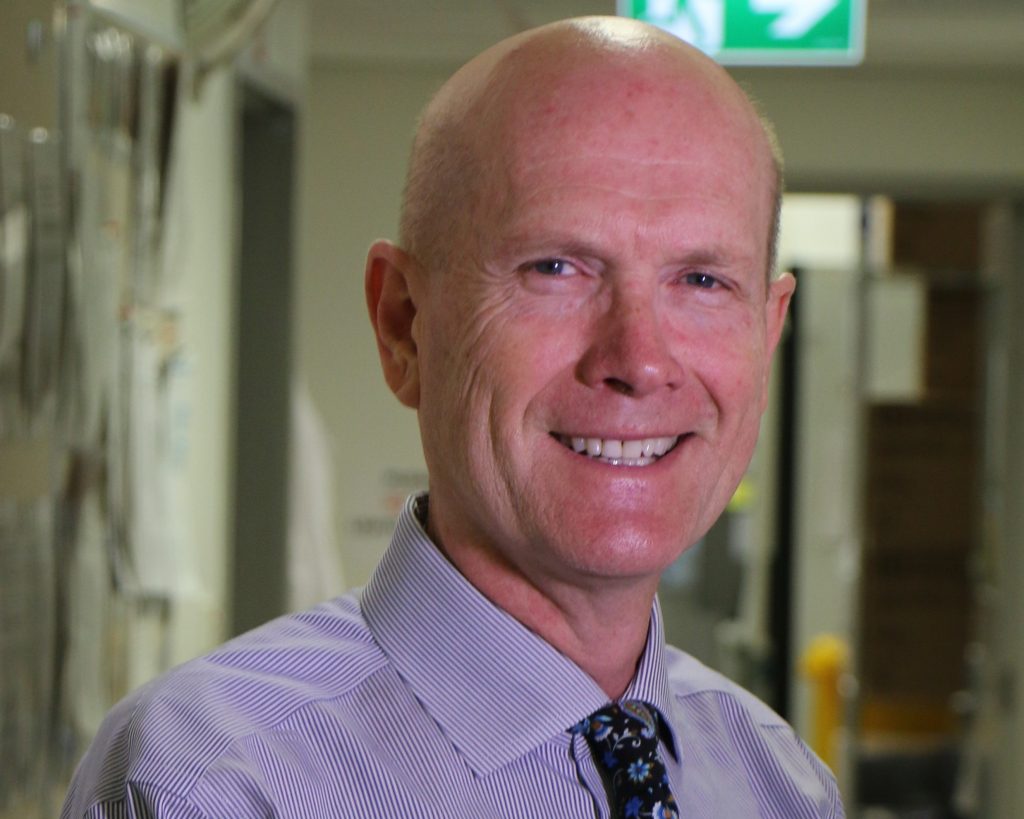The analytical tool that could take the ambiguity out of COVID-19 test results
Australians have had tests for SARS CoV2, the virus causing COVID-19, by the millions. In the months ahead, there’s certain to be millions more. Most results are negative: some, worryingly, are positive. But it’s the ones in the middle – samples for which results aren’t clear-cut – that cause sleepless nights for the public health and healthcare experts and scientists steering our pandemic response.
This group of ambiguous results has helped drive ambitious new screening research. In what is a novel approach to COVID-19 diagnosis, virologists, biochemists and specialist scientists have teamed up to apply the sensitive analytical tool of mass spectrometry to help diagnose COVID-19. It’s a new take on testing that, in time, might play a valuable role in diagnosing other viral infections like influenza.
Professor William Rawlinson, Director of SAViD (the Serology and Virology Division) in NSW Health Pathology, along with a team of specialists including University of Sydney mass spectrometry technicians, have been awarded a NSW Health COVID-19 Research Grant to develop promising research and, hopefully, turn it into an effective new weapon in the current screening arsenal in a relatively short time.

Accuracy and ambiguity
Rawlinson, one of Australia’s foremost infectious disease specialists, is on the frontline of COVID-19 control, supervising a reference lab that tests between 2000 – 4000 samples each day, many of them “difficult”. Scientists in NSW Health Pathology developed molecular diagnostic tests for COVID-19 in early January, before Australia had a confirmed COVID-19 case, and were soon applying it in an unprecedented high-volume, high-pressure situation.
“Accurate diagnosis is absolutely critical because what we are finding – what we suspected – is that some people are asymptomatic or pre-symptomatic but are infected,” says Rawlinson. “Diagnosis with a test is the only way of finding those infections and hopefully stopping spread.”
But while diagnostic testing has undergone rolling refinement, it still can’t answer every question. Rawlinson’s lab has to investigate “difficult” cases every day. Some may have a low level of virus present, making disease detection tough. A person tested three months ago might still be positive in a new test, or have a complex infection with multiple organisms causing symptoms, hampering a clear diagnosis.
With ambiguous cases now making up two-thirds of his lab’s work, Rawlinson is keen for greater clarity and, in mass spectrometry, he see significant promise – literally, a new view of the virus.
A new view
The current molecular diagnostic regimen targets the gene at the heart of the spherical coronavirus that causes COVID-19. But Rawlinson’s colleague Rita Horvarth, Conjoint Professor of Biochemistry at UNSW, suggested applying mass spectrometry to screen for proteins of the virus, including the spikes on the outside of the virus, structures that bind to healthy cells and allow the attacking virus to invade and spread disease.
The specialist team harnesses the analytical process to assess current samples that have also been tested in the more conventional way. “It makes sense – you’re measuring one thing, why not measure another? The cleverness is in the technology and putting it together so it works,” he says.
“We’d start using this test quite early on, in a couple of months, in a research setting, to see where it might help sort out some of these difficult diagnoses. If successful, this may be followed by further development and possibly more general use.”
The advantage of the new process is precision – additional information that, in conjunction with existing molecular testing, will hopefully help identify the virus. And when clear, unambiguous diagnosis has critical implications for everything from individual healthcare to government policy, international travel and opening up the economy, the benefits are obvious.
“What’s become evident now is that you need different types of tests. If there was a single, perfect test, we would do it all the time. At present, we have great tests for routine diagnostics, but we need to continue to improve, and add reference ones where the diagnosis is difficult or confusing so we can do the best by our patients and our community,” says Rawlinson.
By Michelle Schlechta
Updated 5 years ago